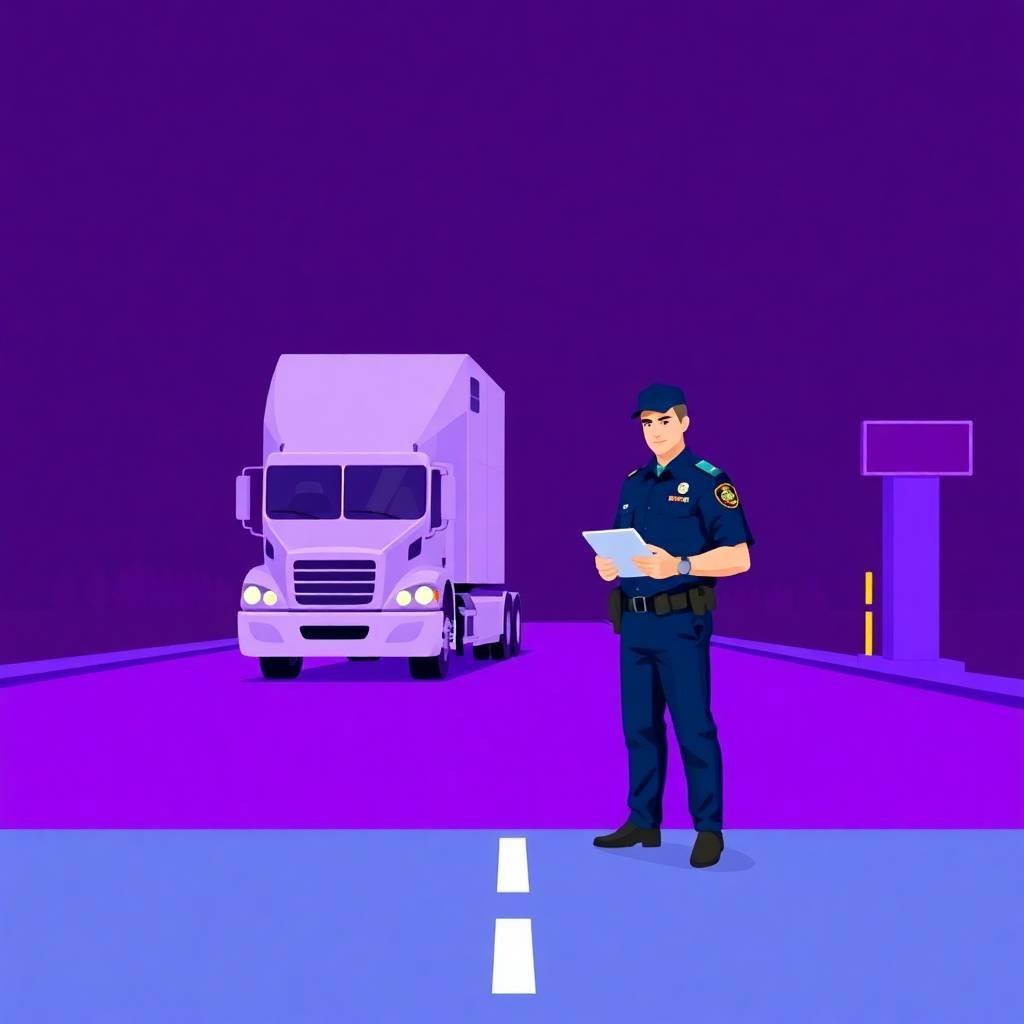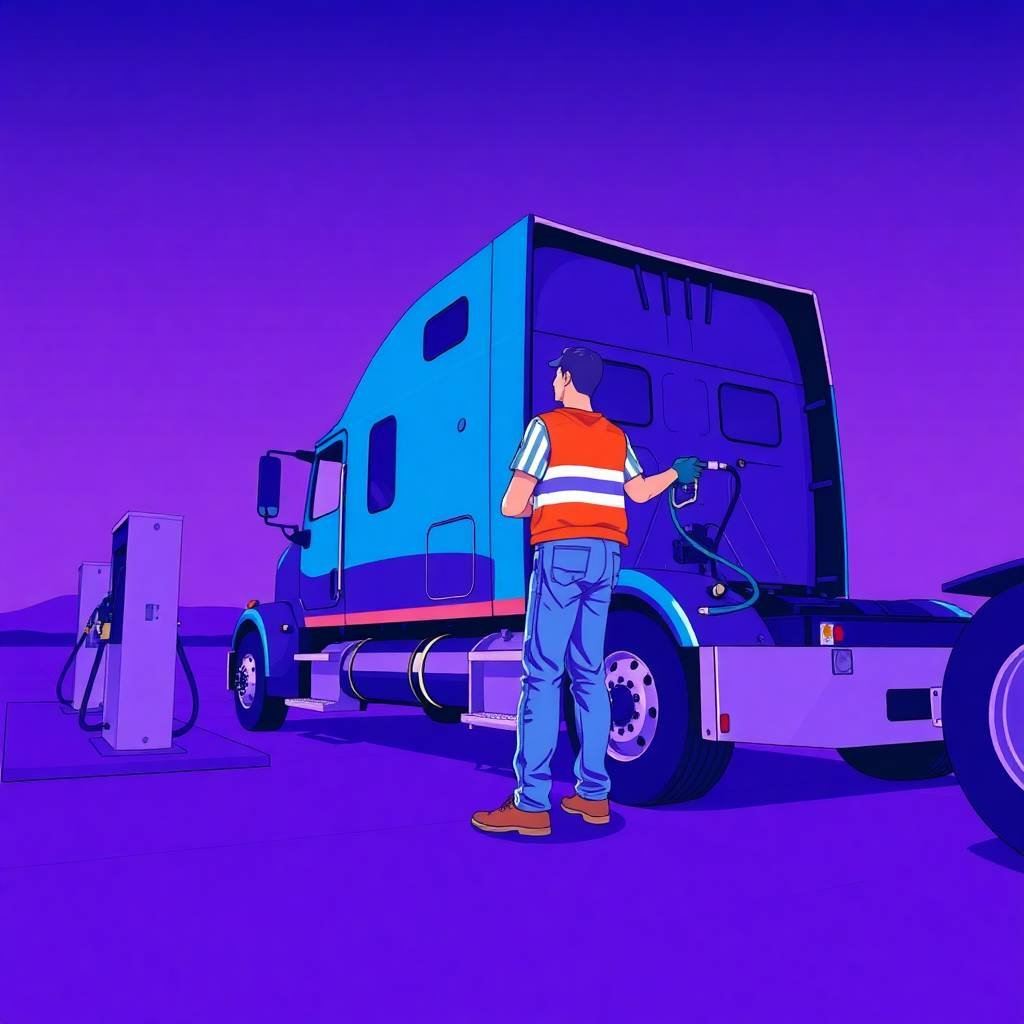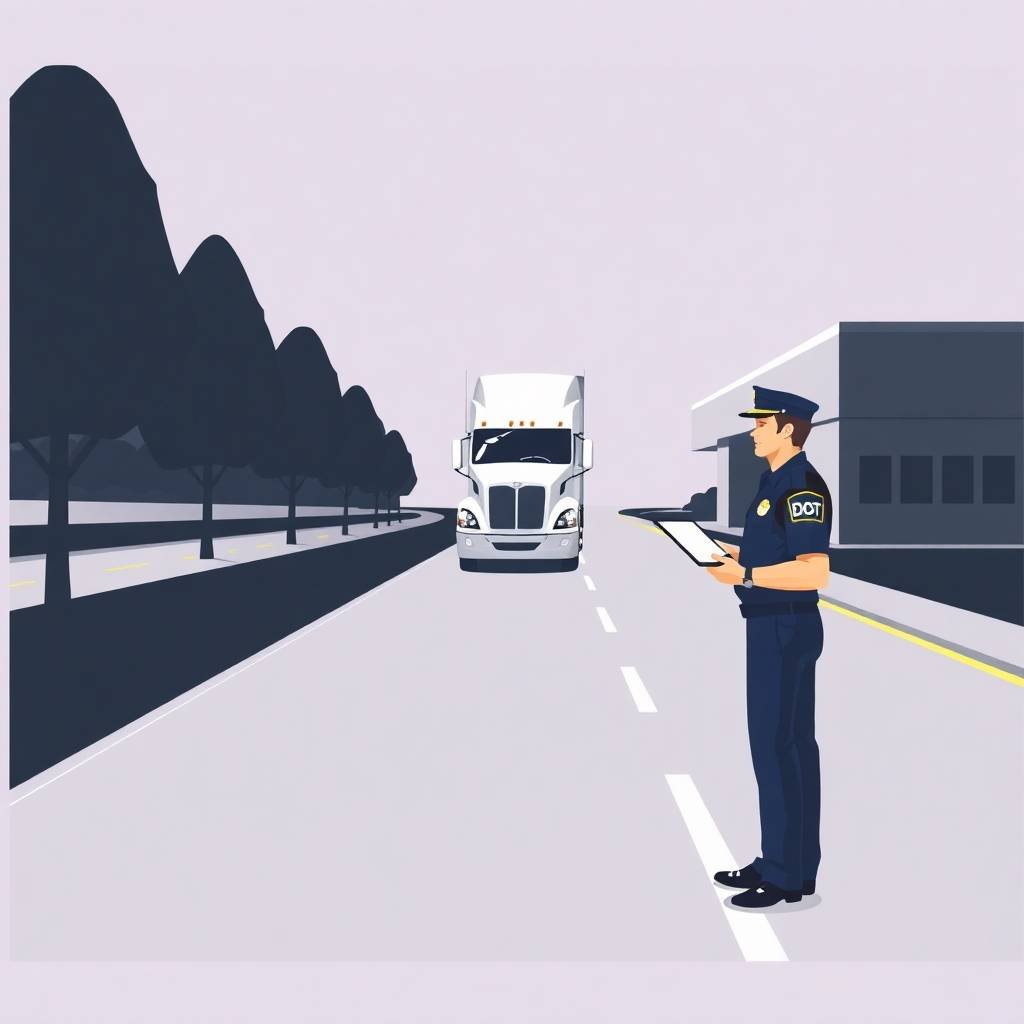1. Understand What Triggers a Compliance Review
For every motor carrier, understanding what can initiate a compliance review is essential to maintaining operations and avoiding costly penalties. Knowing how to prepare for a compliance review isn’t just about having paperwork in order—it’s about proactively addressing the factors that alert FMCSA to investigate your company. Whether you’re a new entrant or a growing fleet, this article outlines what can trigger a review and how to prepare accordingly.
Safety Scores and SMS Alerts
One of the most common triggers for a compliance review is poor performance in the FMCSA Safety Measurement System (SMS). Carriers flagged in SMS categories such as Unsafe Driving or Hours-of-Service Compliance are at high risk. To improve your safety metrics and reduce review risk, refer to this FMCSA SMS 2025 guide. Knowing how to prepare for a compliance review starts with understanding and managing your safety data proactively.
Driver and Vehicle Incidents
Frequent accidents, vehicle violations, or roadside inspections with multiple out-of-service violations can all trigger a review. Ensuring accurate, compliant documentation is a foundational part of how to prepare for a compliance review. Review your driver qualification files regularly and audit driver logs to remain in good standing.
New Entrant Safety Audits
If you’re a new carrier, you will automatically undergo a safety audit within your first 12 months. This is your opportunity to show full compliance. Understanding the new entrant safety audit timeline helps you grasp how to prepare for a compliance review before issues arise. Missing this window or being unprepared often results in penalties or operations shutdowns.
UCR and Registration Errors
Missing or late filings for the Unified Carrier Registration (UCR) can prompt a compliance review. The UCR filing deadlines are critical, and failure to meet them may appear as negligence to FMCSA. Make sure to also check your UCR FAQs to eliminate filing confusion.
Compliance Mistakes and Audit Readiness
Recurring violations in audits or known compliance mistakes—such as poor driver file maintenance or failure to complete the biennial update—can cause FMCSA to initiate a full review. If you’re uncertain about your current standing, consider reviewing this DOT audit preparation checklist to ensure nothing slips through the cracks.
Drug and Alcohol Testing Lapses
Drug and alcohol testing compliance remains a key focus in every review. If you’re not enrolled in a compliant program or haven’t registered with the FMCSA Clearinghouse, you’re at risk. Learn more about drug and alcohol testing compliance to avoid unexpected violations.
Aligning Your Strategy with Full Compliance
Your best defense against a compliance review is comprehensive preparation. Explore our compliance requirements overview to understand what FMCSA expects from your operation. Combine that with this compliance checklist for owner-operators to ensure you’re covering all bases.
Take Action Before You’re Flagged
Don’t wait until a compliance review is triggered to act. Learn how to prepare for a compliance review by booking a free consultation today via this scheduling link. Proactive planning saves time, money, and your business.

2. Gather and Organize All Required Documentation
One of the most critical aspects of how to prepare for a compliance review is ensuring that all necessary documentation is collected, current, and properly organized. FMCSA auditors expect quick access to specific records during a review, and disorganized files can result in unnecessary violations or delays. Proactive organization can be the difference between passing and failing a compliance audit.
Start With a Master Compliance Checklist
To begin gathering your documents, refer to this DOT compliance checklist for owner-operators. This resource outlines all the essential documents FMCSA expects during a review. From hours-of-service logs to driver qualification files, using a checklist ensures nothing is overlooked as you learn how to prepare for a compliance review efficiently.
Driver Qualification Files Must Be Spotless
Your driver files must meet FMCSA standards. This includes commercial driver’s licenses, medical cards, MVRs, and safety performance histories. If you’re unsure whether your documentation is up to date, this guide to driver qualification file requirements will walk you through what’s required. Proper DQ file management is foundational in how to prepare for a compliance review.
Ensure Drug & Alcohol Testing Compliance Records Are Complete
Carriers must maintain records of pre-employment drug tests, random selections, and Clearinghouse queries. If you’ve not enrolled in a compliant program, or your records are disorganized, this can be a major red flag. Review your drug and alcohol testing compliance protocols and FMCSA Clearinghouse compliance requirements to stay audit-ready.
Organize Hours of Service Logs and DVIRs
Make sure you have at least six months of driver logs and DVIRs available and accessible. The driver logs compliance guide and DVIR compliance checklist help you prepare these documents in the correct format. These logs are a core part of how to prepare for a compliance review.
Know Your Registration and Insurance Status
Errors or delays in your Unified Carrier Registration can also trigger a review. Be sure to consult the UCR FAQs and file on time. Insurance filings must also match FMCSA requirements—check the insurance filing requirements guide to confirm everything is current. These items are often overlooked in how to prepare for a compliance review.
Be Ready for the Audit Process
Once all documents are gathered, conduct a mock audit. Use this DOT audit preparation guide to simulate the review process. Identify gaps early so you can correct them. Reviewing the FMCSA compliance mistakes others have made can help you avoid common errors in documentation.
Need Help Organizing Your Compliance Records?
Don’t navigate this alone. Scheduling a consultation with a compliance expert can simplify how to prepare for a compliance review. Book a one-on-one session today via this appointment link to ensure you’re fully prepared.
Take Control of Your Documentation Now
Whether you’re working on your FMCSA portal registration or need help with your compliance requirements overview, organized documentation is key. Understanding how to prepare for a compliance review starts with having everything in place—before FMCSA ever knocks on your door.

3. Review Your Safety Management System Thoroughly
When learning how to prepare for a compliance review, one of the most important steps is to evaluate your Safety Management System (SMS) from top to bottom. FMCSA compliance audits examine whether your SMS is effectively identifying and addressing safety risks. A proactive review helps you pinpoint weak areas and resolve them before they trigger violations or penalties.
Why Reviewing Your SMS Is Non-Negotiable
If you’re not actively monitoring your company’s safety performance, you’re already behind on how to prepare for a compliance review. The FMCSA uses the Safety Measurement System (SMS) to evaluate your safety data, including inspections, crashes, and violations. A poor SMS score increases your risk of an audit and can negatively impact your ability to secure freight contracts and insurance.
Break Down Each Compliance Category
A complete review means examining every key compliance area. Start with the DOT compliance checklist for owner-operators to identify documentation gaps. Include your Unified Carrier Registration (UCR) in this review, as missed filings are a red flag during audits. Proper registration is a basic but vital element in how to prepare for a compliance review.
Evaluate Driver Files and Drug & Alcohol Testing Records
Incomplete driver files or missing drug and alcohol testing documentation are common audit pitfalls. Ensure your driver qualification files are complete and current, including licenses, MVRs, and training records. Likewise, your drug and alcohol testing compliance should cover pre-employment, random, and post-accident testing, plus FMCSA Clearinghouse checks.
Document Safety Training and Policies
An effective SMS includes documented safety policies and regular training. For support in creating or evaluating your program, reference this DOT compliance training for drivers. Lack of training documentation is a critical failure point in how to prepare for a compliance review.
Monitor Hours of Service and Vehicle Inspections
Review your HOS logs and driver logs compliance processes. Also, verify DVIR submissions are timely and complete. Violations in these areas contribute heavily to poor SMS scores and will be scrutinized in a review.
Plan Ahead With Mock Audits and Expert Support
Mock audits help you evaluate where your SMS stands and how well you’re managing ongoing FMCSA compliance requirements. Use the DOT audit preparation guide to simulate a real review and identify improvement areas. For common pitfalls, review this list of FMCSA compliance mistakes.
Make Compliance a Habit, Not a One-Time Event
If you’re struggling with where to start, scheduling a professional consultation can give you clear direction on how to prepare for a compliance review. Use this Calendly link to set up a 30-minute session with a compliance expert who can walk you through your SMS assessment.
Stay Ahead of the Review
From portal registration to insurance filing requirements, everything ties back to how well your safety management system is functioning. How to prepare for a compliance review begins with a complete and current SMS that reflects your company’s commitment to safety and operational integrity. Don’t wait for an audit to discover what’s missing—take charge of your compliance today.

4. Conduct an Internal Audit Before the FMCSA Does
One of the smartest ways to master how to prepare for a compliance review is by conducting a thorough internal audit before the FMCSA initiates one. An internal audit helps identify areas of non-compliance, strengthens your processes, and protects your business from costly violations or operational shutdowns. Proactively reviewing your records and procedures not only builds confidence but also sharpens your ability to pass any official audit.
Why Internal Audits Are Critical in FMCSA Compliance
Understanding how to prepare for a compliance review begins with knowing what the FMCSA will look for. The agency closely examines safety protocols, driver files, vehicle inspections, insurance filings, and drug and alcohol testing. The best way to assess your readiness is to simulate an actual audit using the DOT audit preparation guide. Internal reviews can help you catch missing documentation, outdated registrations, and reporting errors before an inspector does.
Assess Your SMS Scores and Risk Areas
A crucial first step in how to prepare for a compliance review is analyzing your FMCSA Safety Measurement System (SMS) scores. High scores in unsafe driving, HOS compliance, or vehicle maintenance often trigger audits. If your scores are rising, it’s time to act. Internal audits help you evaluate what’s causing the spike and what corrections you must implement to bring scores down.
Audit Your Registration and Filing Requirements
Carrier registration errors are common compliance gaps. Ensure that your Unified Carrier Registration (UCR) is up-to-date. Review the biennial update requirements to confirm your company’s MCS-150 form has been filed correctly. These records are simple but essential when learning how to prepare for a compliance review.
Examine Driver Files and CDL Status
Audit your driver qualification files to ensure each contains current medical certifications, licenses, and MVR checks. Inconsistencies or omissions can lead to violations. Additionally, be aware of CDL disqualification rules and ensure no disqualified drivers are operating vehicles under your DOT number.
Ensure Compliance With Drug and Alcohol Testing Programs
Your internal audit should include a thorough check of your drug and alcohol testing compliance program, along with a review of Clearinghouse compliance. Missing test results, unlogged refusals, or lack of pre-employment screening are red flags that often show up during external audits.
Don’t Overlook Documentation and Reporting
Accurate driver logs, completed DVIRs, and updated insurance filings are essential parts of how to prepare for a compliance review. Ensure that all reports are well-organized, backed by documentation, and stored in accordance with FMCSA guidelines.
Get Expert Help With Your Internal Audit
If you’re unsure where to begin, consider scheduling a consultation with a compliance expert. Book your 30-minute session here to get hands-on support tailored to your company’s needs. A second opinion can help you uncover hidden compliance gaps you might miss on your own.
Stay Ahead of the FMCSA
Don’t wait for the FMCSA to knock on your door. An internal audit is the most proactive strategy in how to prepare for a compliance review. Review your FMCSA compliance requirements, address common mistakes, and use helpful tools like the DOT compliance checklist for owner-operators to stay on track. By taking control now, you’ll be well-prepared and confident for any FMCSA audit ahead.

5. Train Your Team to Respond with Confidence
One of the most overlooked steps in learning how to prepare for a compliance review is ensuring your entire team is ready to respond confidently and correctly during an FMCSA audit. While documentation and systems are critical, the people who manage them daily must also understand the rules and their role in staying compliant. A well-trained staff can mean the difference between a smooth audit and costly violations.
Understanding Roles in Compliance Response
To master how to prepare for a compliance review, each team member—from dispatchers to drivers to compliance officers—must understand their responsibilities during an audit. Providing tailored DOT compliance training for drivers is a foundational step. Everyone should know what documents are required, how to answer questions from auditors, and where to locate key compliance files quickly and accurately.
Create a Response Protocol in Advance
Establishing a clear response plan is essential in how to prepare for a compliance review. Assign team roles, such as who will meet with the inspector, who will provide the driver qualification files, and who will pull ELD data or driver logs. Practice mock audits to simulate real-life scenarios. Resources like the DOT audit preparation checklist can help guide these sessions.
Use Checklists to Reinforce Procedures
Checklists help teams stay on track. The DOT compliance checklist for owner-operators and the DOT safety compliance checklist offer structured frameworks your team can follow daily and in preparation for audits. Integrate these into your training modules to make compliance habits second nature.
Train for Specific Regulatory Topics
Learning how to prepare for a compliance review also means diving deep into specific FMCSA regulations. Make sure your team is well-versed in areas like FMCSA compliance requirements, drug and alcohol testing compliance, and FMCSA Clearinghouse rules. Training should also cover CDL disqualification rules and hazmat compliance if applicable.
Avoid Common Mistakes with Targeted Learning
Many companies face fines due to repeated FMCSA compliance mistakes. Incorporating these lessons into your training curriculum will help staff understand the high-risk areas to avoid. Additionally, review how incorrect UCR filings and failure to complete biennial updates can lead to audit triggers.
Schedule Professional Coaching Sessions
One of the best ways to empower your team in how to prepare for a compliance review is to bring in a seasoned compliance consultant. You can book a 30-minute session for expert insight into your current systems and to fine-tune your team’s response readiness.
Stay Ahead with Ongoing Training
Regulations change, which is why ongoing education is part of how to prepare for a compliance review. Review FMCSA SMS updates, portal registration, and changes in hours of service exemptions. Incorporate these updates into regular team meetings or refresher courses to keep everyone current.
A confident, informed team is your strongest asset during an FMCSA compliance review. Train them thoroughly, equip them with the right tools, and reinforce a culture of accountability and readiness. That’s how you truly master how to prepare for a compliance review.

6. Verify Insurance Filings and Regulatory Statuses
One of the most critical steps in learning how to prepare for a compliance review is ensuring your insurance filings and regulatory statuses are accurate and up to date. Failing to meet these fundamental FMCSA requirements can lead to penalties, revoked operating authority, or failed audits. To avoid these risks, proactive verification is essential.
Start with Insurance Filings
If you’re unsure how to prepare for a compliance review, begin with your FMCSA insurance filing requirements. Every motor carrier must maintain proper liability and cargo insurance levels, and these must be filed directly with the FMCSA. Any lapse, even a clerical error, can jeopardize your operating status. Make it a regular practice to verify that your BMC-91 or BMC-34 forms are current and reflect correct coverage amounts.
Additionally, use the FMCSA portal registration to monitor the status of your filings. If your insurance company fails to update your records promptly, your DOT number could be deactivated.
Check Regulatory Statuses Regularly
Another core part of how to prepare for a compliance review is reviewing all other compliance statuses. This includes checking your UCR filing deadlines and understanding the nuances of Unified Carrier Registration FAQs. Failing to renew your UCR can raise red flags during an audit or roadside inspection.
Make sure your FMCSA biennial updates are submitted on time. Incorrect or outdated company information can cause compliance complications or prevent you from receiving important audit notifications.
Understand Your Safety Ratings and Risk Scores
One often-missed element in how to prepare for a compliance review is monitoring your FMCSA Safety Measurement System (SMS) scores. These scores reflect your safety and compliance history across various BASIC categories. Poor performance in areas like HOS or drug and alcohol violations can prompt audits. Conduct internal reviews and take action to reduce violations before the FMCSA intervenes.
Internal Audits Reduce Risk
Part of preparing involves identifying and correcting errors before an audit occurs. Cross-reference your documents using tools like the DOT compliance checklist for owner-operators and the DOT safety compliance checklist. These resources help ensure all required documents—from driver qualification files to DVIR records—are in place.
For newer carriers, reviewing the new entrant safety audit timeline is a smart way to get ahead of FMCSA expectations. Don’t wait until an auditor is knocking—take initiative today.
Avoid Costly Mistakes
As you work on how to prepare for a compliance review, take time to learn from common FMCSA compliance mistakes. Issues such as missing drug and alcohol program documentation, inaccurate HOS exemption usage, or neglected hazmat requirements are frequently cited during audits.
Book a Compliance Strategy Session
Don’t leave your regulatory readiness to chance. If you’re unsure how to prepare for a compliance review or need expert assistance verifying your insurance and filings, schedule a 30-minute session today. A professional review can help you catch errors early and avoid unnecessary fines.
Staying ahead of insurance and regulatory updates is a cornerstone of how to prepare for a compliance review. With the right systems, training, and expert support, you can pass any FMCSA audit with confidence.

7. Schedule Expert Help Before It’s Too Late
Understanding how to prepare for a compliance review can make or break your trucking business when the FMCSA comes knocking. Unfortunately, too many carriers delay seeking help until they’re already in trouble. The best time to schedule expert guidance is before a compliance issue arises—not after. With proper planning, you can ensure all your systems, filings, and training programs are audit-ready year-round.
Why Expert Support is Essential
Trying to figure out how to prepare for a compliance review on your own can be overwhelming. From maintaining accurate driver qualification files to staying on top of UCR filing deadlines, the regulatory landscape is complex. And mistakes—whether it’s a missed update or a misfiled drug test record—can cost you time, money, and your operating authority.
Instead of reacting to a DOT notice, take proactive steps by scheduling a 30-minute compliance strategy session with an expert who understands exactly what auditors look for.
Key Areas of Review
To truly master how to prepare for a compliance review, your internal systems need to cover every FMCSA requirement. This includes compliance with the FMCSA Clearinghouse rules, which regulate drug and alcohol testing procedures. Also, ensure all drug and alcohol testing program components are in place and documented properly.
Every fleet—regardless of size—must also comply with insurance filing requirements, hazmat regulations, and CDL disqualification rules. These areas are among the top FMCSA audit triggers.
Avoid Common Compliance Mistakes
When exploring how to prepare for a compliance review, it’s important to identify and avoid common compliance mistakes. For instance, many carriers overlook their biennial update obligations, or fail to train drivers with the right DOT compliance training. These errors may seem small but can result in serious penalties.
If you’re a new entrant, pay close attention to the safety audit timeline. Being unprepared for this early review is a major red flag to regulators.
Cover All Bases
A good expert will help you assess everything from your ELD device requirements to your driver logs compliance. They’ll walk you through tools like the DOT compliance checklist for owner-operators and a complete DOT safety compliance checklist.
You’ll also need a firm understanding of the FMCSA Safety Measurement System (SMS) 2025, which tracks and scores your compliance history. These metrics are often used to prioritize carriers for audits—another reason to learn how to prepare for a compliance review before it’s too late.
Book Now to Stay Ahead
If you’re still uncertain how to prepare for a compliance review, now is the time to act. Don’t wait for an audit notice. Schedule your 30-minute appointment today and take the first step toward full FMCSA compliance.
Being proactive is the smartest move you can make. With expert help, you can navigate even the most complex regulations with confidence—and stay ahead of costly compliance challenges.

What is the first step in learning how to prepare for a compliance review?

The first step in learning how to prepare for a compliance review is understanding what documents and records will be evaluated. This includes ensuring your driver qualification files are complete and properly maintained. If you need help with setup or ongoing monitoring, our DQ File Setup and Monitoring services can help ensure you’re always ready for an audit.
How can I make sure my drug and alcohol testing program meets FMCSA requirements?

To prepare for a compliance review, your drug and alcohol testing procedures must meet strict FMCSA standards. This includes pre-employment, random, and post-accident testing. If you’re unsure whether your program is compliant, visit our Drug and Alcohol Testing Management page to ensure you’re meeting all federal guidelines.
What should I do if I haven’t filed my UCR yet?

Failing to file your UCR can trigger a compliance review or cause issues during one. A key part of how to prepare for a compliance review is ensuring your Unified Carrier Registration is current. Our UCR Filing Assistance service makes it easy to stay compliant and avoid costly penalties.
Do I need to worry about IFTA, IRP, or BOC-3 when preparing for a compliance review?

Absolutely. Part of how to prepare for a compliance review is making sure all your registrations and filings—like IFTA, IRP, and your BOC-3—are properly submitted and up to date. If you need help managing these requirements, we offer IFTA, IRP, and BOC-3 support to help streamline your compliance efforts.
How far in advance should I start preparing for a DOT audit or compliance review?
The best practice in how to prepare for a compliance review is to treat every day as audit day. Regular reviews of your documents, procedures, and safety scores are crucial. For a complete breakdown of what to expect and how to prepare effectively, visit our DOT Audit Preparation page.
Igor Iturriaga is a transportation compliance expert and founder of Dynamic 305 Miami LLC. He helps owner-operators and fleets stay FMCSA-compliant and audit-ready. https://www.linkedin.com/in/igor-iturriaga-64503217/
